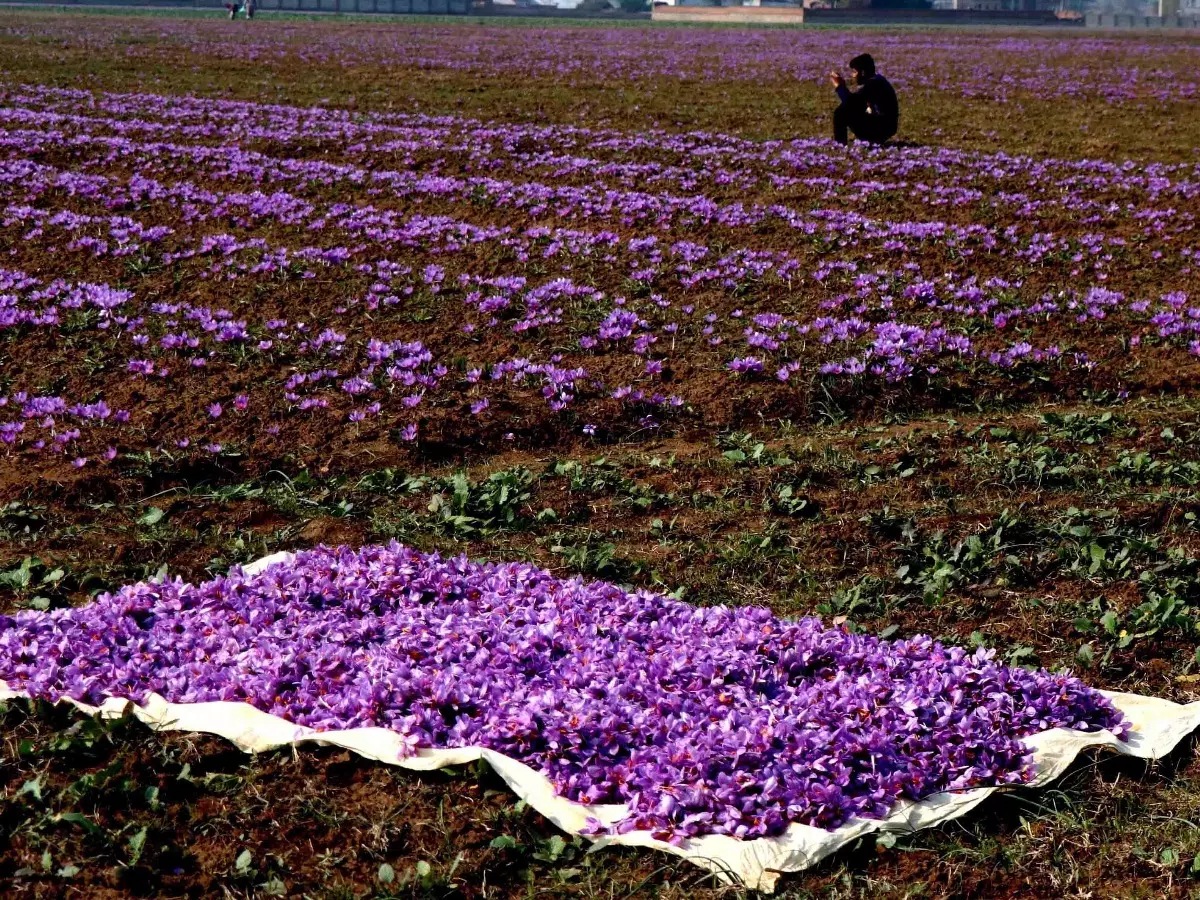Explained: What Makes Kashmiri Saffron World's Best
Kashmiri Saffron is a unique thing cultivated in the beautiful valleys of Kashmir. Saffron is the most expensive spice in the world and is considered to be the life of Indian royal food. Also known as 'red gold', Kashmiri saffron was given a GI tag in the international market, which increased its importance even more. GI tag helped it to compete with its competitors in the market.

Kashmiri Saffron is a unique thing cultivated in the beautiful valleys of Kashmir. Saffron is the most expensive spice in the world and is considered to be the life of Indian royal food.
Also known as 'red gold', Kashmiri saffron was given a GI tag in the international market, which increased its importance even more. GI tag helped it to compete with its competitors in the market.
In 2020, a 30-year record was broken in Kashmir when 18 tonnes of saffron was produced. Depending on the quality of saffron, saffron is sold in the international market at the rate of three to five lakh rupees per kg.
Saffron is being grown for centuries
 BCCL
BCCL
Saffron, which is called the king of spices, is considered to be the most expensive spice. It is originally grown in Kareva of Pampore and Budgam in Srinagar. About 16,000 families from 226 villages are involved in this business.
The cultivation of saffron here is believed to be from the first century BCE. People who migrated from Central Asia had introduced people to its cultivation.
Why is Kashmiri Saffron best?
Kashmiri Saffron is considered to be of the highest quality because of the high amount of crocin in it. Crocin gives colour and medicinal properties to saffron. The amount of crocin in Kashmir's saffron is 8.72 per cent, while the same amount in Iran's saffron is 6.82 per cent. It is cultivated at an altitude of 1600 meters above sea level.
 Unsplash
Unsplash
Saffron is the stigma of flowers. There are about three or four stigmas in each flower. Its cultivation is completely done manually by the Kashmiri people. They pluck these stigmas with their hands and then dry them separately. Saffron has been used for many centuries. It is being used by the pharma company, therapy, dye industry etc.
How does Iranian Saffron affect the Kashmiri Saffron market?
The demand for the world's most expensive Kashmiri saffron decreased in the market when Iranian saffron entered the market. Spain, Iran, and Afghanistan sell saffron of poor quality at a lower price.
 Unsplash
Unsplash
According to reports, Iran is currently the largest producer of saffron. It cultivates 300 tonnes of saffron every year. After the arrival of Iranian saffron, the price of Kashmiri saffron has halved since 2007. Today Iran produces 80 to 90 per cent of the world's saffron. Kashmiri saffron had a negative effect due to the arrival of adulterated saffron by Iran in the market.
The price of Kashmiri saffron ranges between Rs 1 to 3 lakh per kg. They are expensive because they are produced by manual labour. About two lakh saffron stigmas are plucked by hand.
While giving the GI tag to Kashmiri Saffron, it said, ¡°Apart from having high medicinal value, Kashmir Saffron is associated with traditional Kashmiri cuisine and represents the rich cultural heritage of Kashmir. It has gained its name over the ages because of its aroma, dark colour, etc. It can be grown only in Jammu and Kashmir.¡±
What is GI Tag (Geographical Indication)?
 BCCL
BCCL
GI tag is a special tag given to a specific area of ??products, agricultural, natural and manufactured products (handicrafts and industrial goods). It is given to a product of special quality and identity that originates in a specific geographical area. It is known that till now more than 300 products including Chanderi sarees, Kanjeevaram sarees, Darjeeling tea and Malihabadi mangoes have got GI tag in India.
For more on news and current affairs from around the world please visit Indiatimes News.
